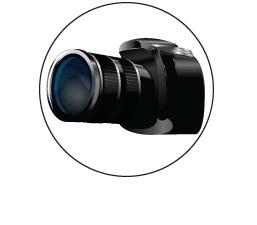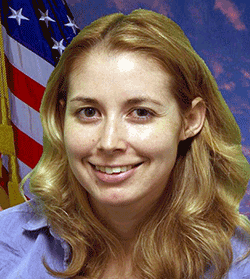Discipline Overview:
Clear and thorough documentation of crime scenes and evidence is vital in criminal investigations and adjudications. Details matter and it is up to these professionals to paint the picture of the scene, context and location of evidence, extent of injuries and/or damage, etc. To ensure evidence admissibility, their photos must be relevant, material, and probative without being overly prejudicial. Such professionals are tasked with: requisitioning necessary equipment and software, maintaining it, saving original and working copies of captured images and/or post-processing efforts (records retention), creating photo logs, and generating supplemental narrative reports about their efforts and conclusions. They are frequently called to testify as factual and/or expert witnesses to admit photo exhibits and/or discuss and justify analytical conclusions or opinions. Many also serve as local, national, and/or international trainers for other law enforcement, forensic, and legal professionals.

Forensic Photography and Electronic Imaging Subcommittee Chair
Stephanie Hoffman, UT, USA
Committee MembersReturn to Forensic Disciplines
Qualifications:
Most Forensic Scientists will have a minimum of a B.S. in Forensic Sciences, note that many especially in major metropolitan areas will have an M.S. in Forensic Sciences. Both basic and advanced coursework and training in forensic photography are key and have even been noted in the Forensic Science Education Programs Accreditation Commission (FEPAC) Accreditation Standards. It is rare to only be a photographer at scenes/morgues or in the lab. Thus, Crime Scene Specialists, Crime Lab Analysts, Law Enforcement Officers, Medicolegal Death Investigators, and Medical Examiners must be well versed in such imaging techniques as it is a standard component of their professional responsibilities.
Certification:
Standards:
- Organization for Scientific Area Committees (OSAC), Video/Imaging Technology & Analysis Subcommittee
- Scientific Working Group on Digital Evidence (SWGDE)
- International Association for Identification (IAI) Resolution 97-9
Resources:
For more information about the Forensic Photography and Digital Imaging Discipline, below are some helpful resources:
- Crime Scene Photography
- Advanced Crime Scene Photography
- Handbook of Forensic Photography
- Fundamentals of Forensic Photography: Practical Techniques for Evidence Documentation on Location and in the Laboratory
- Pocket Guide to Crime Scene Photography
- Police Photography
- Alternate Light Source Imaging: Forensic Photography Techniques
- Processing Vehicles Used in Violent Crimes for Forensic Evidence
- Practical Forensic Digital Imaging: Applications and Techniques
- Forensic Uses of Digital Imaging
- Forensic Digital Image Processing: Optimization of Impression Evidence
- Crime Scene Documentation: Preserving the Evidence and the Growing Role of 3D Laser Scanning
- Report Writing for Crime Scene Investigators
- Ethics and the Practice of Forensic Science
- Ethical Standards in Forensic Science
- Successful Expert Testimony
- Effective Expert Witnessing: Practices for the 21st Century
- Expert Witnessing and Scientific Testimony: A Guidebook
- Wrongful Convictions and Forensic Science Errors: Case Studies and Root Causes
Informational Websites:
- A Simplified Guide to Crime Scene Photography
- Crime Scene Investigator Network: Crime Scene and Evidence Photography
- Forensic Technology Center of Excellence (FTCOE): Digital Evidence
Journals:
Organizations Relevant to this Discipline:
Law Enforcement & Emergency Services Video Association International, Inc. (LEVA)
Information for Teachers:
- U.S. Bureau of Labor Statistics Occupational Outlook Handbook: Forensic Science Technicians
- Occupational Employment and Wage Statistics (OEWS) Maps
- Major Occupational Group: Life, Physical, and Social Science Occupations
- Detailed Occupations: Forensic Science Technicians
- Occupational Employment and Wage Statistics (OEWS) Maps
- O*NET OnLine: Forensic Science Technicians
- Global Forensic and Justice Center: Online CSI Courses
- Texas A&M Engineering Extension Service (TEEX) Online Forensics Courses
- Fauxrensics Videos
- The Imprint Videos
- Students will benefit from understanding how to adjust manual settings to achieve proper exposures, so give these exposure simulators a try:
Ideas for more Research Projects:
- The International Association for Identification (IAI) holds an annual educational conference each year and is always seeking poster, lecture, and/or workshop submissions focused on the following:
- Advanced lighting techniques
- Alternate Light Source (ALS) imaging in the UV, VIS, and IR regions
- Crime scene and evidentiary imaging
- High Dynamic Range (HDR) imaging
- Injury and macro photography
- Forward Looking Infrared (FLIR) for search, rescue, and recovery
- Panoramic imaging
- Photogrammetry
- Post-Processing Techniques
- Surveillance camera deception tactics (adversarial patterns, light sourcesand reflective items
- Information about proper collection of this evidence
- See standards and recommended texts listed above
- Image Quality and Clarity: The Keys to Forensic Digital Image Processing Webinar
- Digital and Multimedia Forensics: The Impact of Disturbing Media Webinar
- Jonathan W. Hak KC PhD: Image-Based Evidence and Expert Witness Testimony Blog Articles
- Cognitive Consultants International HQ: Forensic Identification
